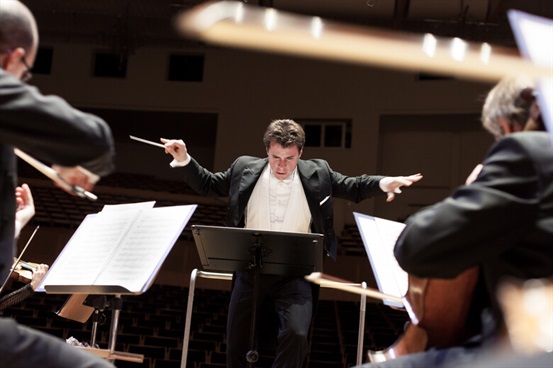
Jakub Hrůša © Andreas Herzau
Wiener Philharmoniker / Hrůša
Wednesday
10
May
2023
19:30 – ca. 21:15
Großer Saal
Performers
Wiener Philharmoniker
Jakub Hrůša, Dirigent
Programme
Leoš Janáček
Žárlivost »Eifersucht«. Ouverture (1894)
Sergej Prokofjew
Prélude (Romeo und Julia. Ballett op. 64) (1935–1936)
Montagues und Capulets op. 64b/1 (Suite Nr. 2 aus »Romeo und Julia«) (1936)
Das Mädchen Julia op. 64b/2 (Suite Nr. 2 aus »Romeo und Julia«) (1936)
Masken op. 64a/5 (Suite Nr. 1 aus »Romeo und Julia«) (1936)
Romeo und Julia. Die Balkonszene op. 64a/6 (Suite Nr. 1 aus »Romeo und Julia«) (1936)
Tybalts Tod op. 64a/7 (Suite Nr. 1 aus »Romeo und Julia«) (1936)
Romeo und Julia vor dem Abschied op. 64b/5 (Suite Nr. 2 aus »Romeo und Julia«) (1936)
Romeo an Julias Grabe op. 64b/7 (Suite Nr. 2 aus »Romeo und Julia«) (1936)
Julias Tod op. 101/6 (Suite Nr. 3 aus »Romeo und Julia«) (1946)
***
Dmitri Schostakowitsch
Symphonie Nr. 5 d-moll op. 47 (1937)
Subscription series
Orchester international
Links
https://www.wienerphilharmoniker.at
http://www.jakubhrusa.com
Presented by
Wiener Konzerthausgesellschaft
In the twilight
If anyone understood jealousy, it was Leoš Janáček. In the last decade of his life, spurred on by his late breakthrough with the opera »Jenůfa«, the 62-year-old threw himself into a series of affairs, which resulted in a suicide attempt by his wife in 1916. Almost obsessively, then, the theme recurs in his major stage works and dominates, for example, his 1st String Quartet (based on Tolstoy's »Sonata of the Cross«). »Žárlivost« ('Jealousy') was originally intended to serve »Jenůfa« as a prelude, but was then dropped from the work's context in the course of years of composition. The short but intense orchestral piece is the prelude to the Vienna Philharmonic's concert, which Jakub Hrůša also brings into the twilight of fateful passion with his very personal compilation from Prokofiev's masterpiece »Romeo and Juliet«. Despair, tragedy, grief and a cynical triumph then drive Shostakovich's 5th Symphony, with which the composer pulled his head out of Stalin's noose in 1937. The risky art of this »systemic camouflage« has lost nothing of its shattering truth behind it to this day.
Publications
Program sheet